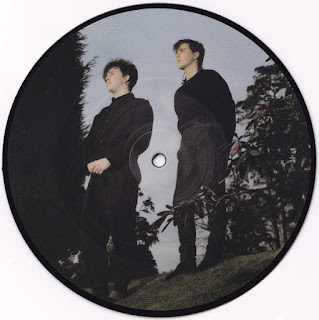TEARS FOR FEARS - PALE SHELTER
Estrenada: 9 d'abril de 1982
Llistes: Regne Unit: #5
"Pale Shelter", escrita per Roland Orzabal i cantada per Curt Smith, va ser originalment llançada com el seu segon senzill a principis de 1982, però no va aconseguir èxit a les llistes del Regne Unit. Més tard, es va convertir en un èxit dins dels vint millors a Canadà i es va reeditar al Regne Unit el 1985, arribant al top 75. La versió més coneguda és un reenregistrament de 1983, que va esdevenir el tercer èxit dins del Top 5 a les llistes del Regne Unit, arribant al número 5. Va ser inclosa a l'àlbum debut de Tears for Fears, "The Hurting".
"Pale Shelter" es va llançar inicialment el 1982 com a single només al Regne Unit en formats de single i maxi-single. El single contenia la gravació original de la cançó, mentre que el maxi-single incloïa una versió ampliada i la cara B "The Prisoner", que mostrava experiments inicials de la banda amb sintetitzadors i samplers. El 1983, després de l'èxit de "Mad World" i "Change", es va llançar una versió reenregistrada al Regne Unit i Europa en diversos formats, incloent picture discs i vinils de colors. La reedició incloïa una versió lleugerament editada en single i una versió ampliada en maxi-single. Totes les edicions contenien la cara B "We Are Broken".
En les notes del disc per a la reedició de "The Hurting" el 1999, Roland Orzabal va explicar que "Pale Shelter" és "una mena de cançó d'amor, tot i que més referida als pares que no,pas a una noia". Va descriure com es va desenvolupar la cançó, explicant que va passar setmanes tocant repetidament dos acords. Una matinada, es va despertar amb la melodia i la lletra totalment formades al cap. Després, en passar les pàgines d'un llibre d'art, va trobar "Pale Shelter" de Henry Moore, que sentia que condensava perfectament l'essència de la cançó.
Curt Smith va explicar en una entrevista el 2013 amb The Quietus que la decisió sobre qui cantaria una cançó determinada sovint depenia del to i l'estil requerits. La veu més fosca i melancòlica de Smith s'adaptava millor a les cançons més suaus, mentre que la veu de Roland Orzabal, caracteritzada com més alta i contundent, era triada per a les cançons que requereixien més potència i força. Smith va citar exemples com "Mad World", "Pale Shelter" i "Change", on l'estat d'ànim i la profunditat emocional de les cançons coincidien bé amb el seu estil vocal.
TEARS FOR FEARS - PALE SHELTER
Released: April 9, 1982
Charted: UK: #5
"Pale Shelter", written by Roland Orzabal and sung by Curt Smith, was originally released as their second single in early 1982 but didn't achieve chart success in the UK. It later became a top 20 hit in Canada and was reissued in the UK in 1985, reaching the top 75. The more well-known version is a re-recording from 1983, which became the band's third top 5 chart hit in the UK, peaking at number 5. It was included on Tears for Fears' debut album "The Hurting”.
"Pale Shelter" initially released in 1982 as a UK-only single in both 7" and 12" formats. The 7" featured the original recording of the song, while the 12" included an extended version and the B-side "The Prisoner," showcasing early synthesizer and sampling experiments. In 1983, after the success of "Mad World" and "Change," a re-recorded version was released in the UK and Europe in various formats, including picture discs and colored vinyl. The reissue included a slightly edited 7" version and an extended 12" version, with all editions featuring the B-side "We Are Broken."
In the liner notes for the 1999 re-release of "The Hurting," Roland Orzabal explained that "Pale Shelter" is "kind of a love song, though more referring to one's parents than to a girl." He described how the song came together, saying he spent weeks playing two chords repeatedly. One morning, he woke up with the tune and lyrics fully formed in his mind. Later, while flipping through an art book, he stumbled upon "Pale Shelter" by Henry Moore, which he felt neatly condense the essence of the song.
Curt Smith explained in a 2013 interview with The Quietus that the decision on who would sing a particular song often depended on the tone and style required. Smith's darker and more melancholic voice suited softer songs, while Roland Orzabal's voice, characterized as louder and more assertive, was chosen for songs that required belting and making a strong point. Smith noted examples like "Mad World," "Pale Shelter," and "Change," where the mood and emotional depth of the songs aligned well with his vocal style.




















Cap comentari:
Publica un comentari a l'entrada